Physical Address
304 North Cardinal St.
Dorchester Center, MA 02124
In the workup of patients with suspected megaloblastic anemia, clinical findings, the complete blood count (CBC) with manual differential, and additional diagnostic studies are critical for narrowing the differential diagnosis ( Boxes 4.1 and 4.2 ). Beyond just the hemoglobin/hematocrit tests, the hematologist needs to scrutinize the red blood cell (RBC) indices, including the mean cell volume (MCV) and the red cell distribution width (RDW). The morphologic classification of anemias according to the MCV into microcytic, normocytic, and macrocytic types allows for a systematic consideration of the possible underlying causes of the anemia in each category, and provides a road map for selecting the relevant laboratory investigations in any particular case. Once the cause of the anemia is established, the appropriate treatment and follow-up can then be instituted.
General symptoms of anemia, including fatigue, palpitations, shortness of breath
Pallor and jaundice giving rise to “lemon yellow” skin color
Tongue changes, smooth or raw beefy appearance, and oral pain (see Fig. 4.1 )
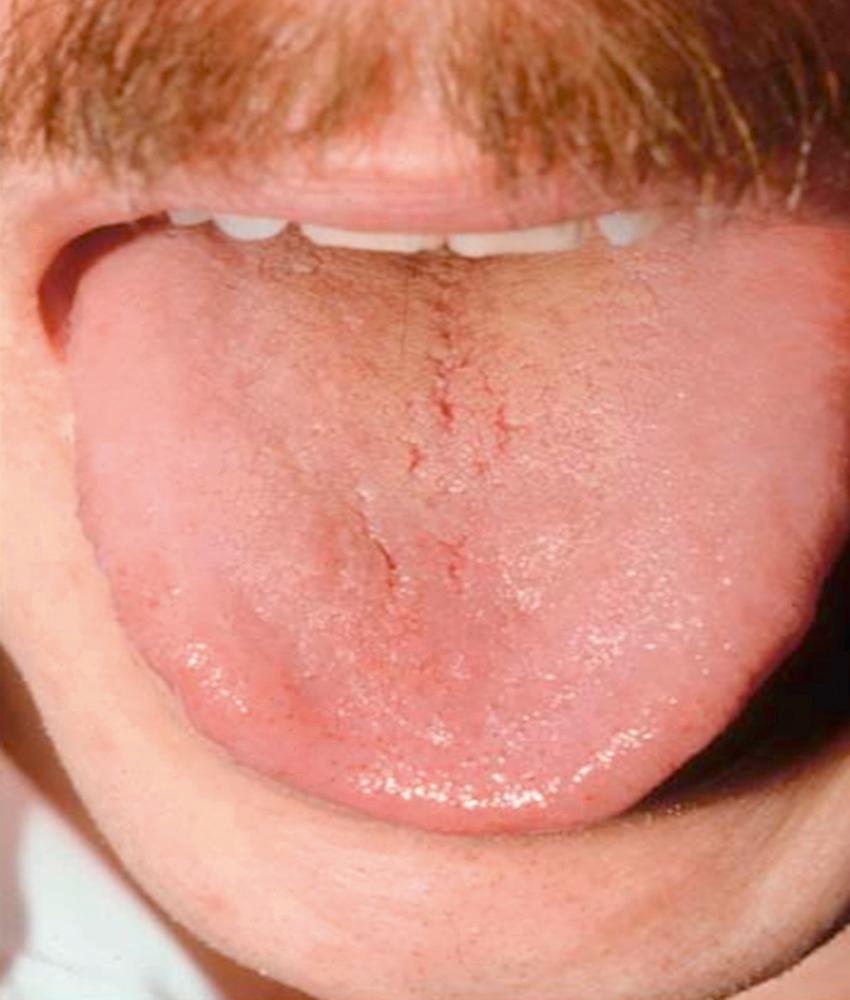
Neurologic changes more conspicuous in vitamin B 12 deficiency and rare in folate deficiency
Paresthesias, “pins and needles,” gait abnormalities
Slow mentation, cognitive deficits
Autonomic dysfunction, urinary incontinence, impotence
Hyperpigmentation, palms, soles, axillary region, and other skinfolds in B 12 deficiency (see Figs. 4.2 and 4.3 )
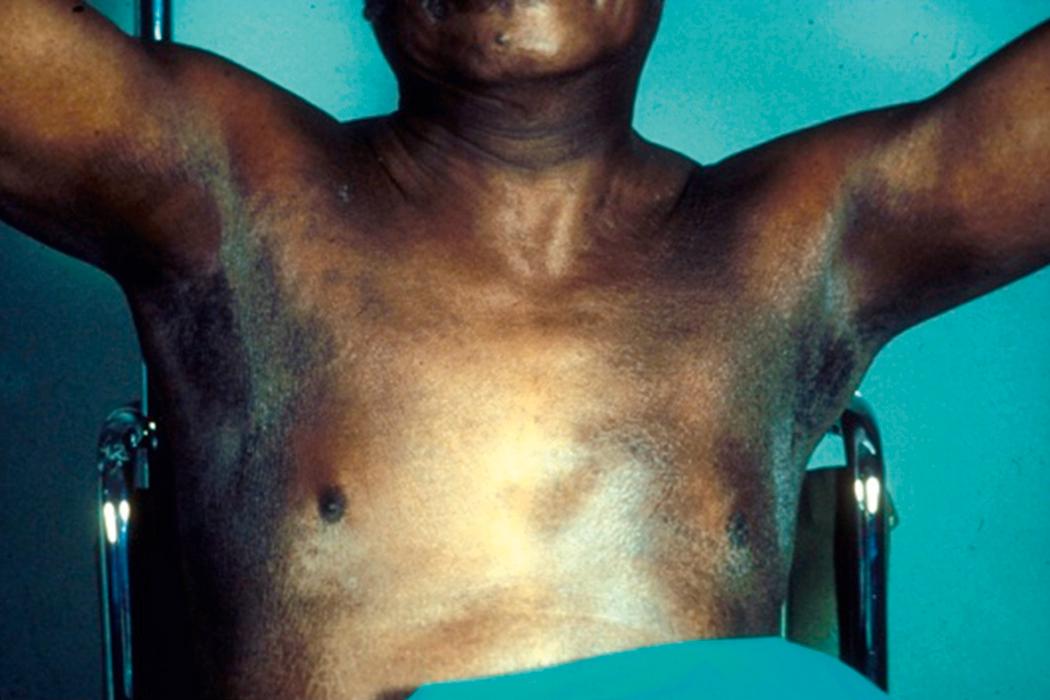
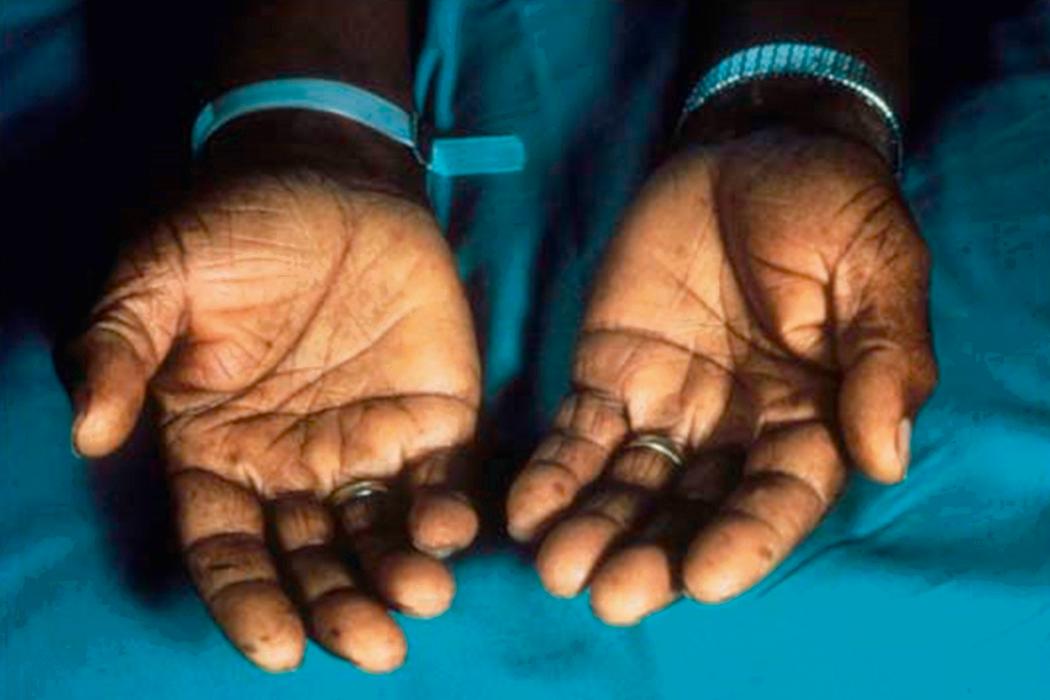
Vitamin levels (B 12 , folate)
Metabolite measurements (homocysteine, methylmalonic acid)
Clinical chemistry
Increased bilirubin
Increased lactate dehydrogenase
Increased serum iron, ferritin
Intrinsic factor antibodies (in approximately 60% of pernicious anemia)
The scope of this chapter covers primarily macrocytic anemia, defined in adults as MCV greater than 100 fL. However, it is important to recognize that not all macrocytic anemias are megaloblastic. Likewise, not all megaloblastic anemias are associated with an increased MCV, because if there is a coexisting condition that would result in the production of microcytic red cells (e.g., concurrent iron deficiency anemia, thalassemia minor), this would cause the MCV to fall within the normal reference range (80–100 fL). , In this situation the RDW is usually elevated because of the variation in red cell size resulting from the underlying dual perturbations in erythropoiesis. Additionally, in the presence of micropoikilocytosis, such as occurs in microangiopathic hemolytic conditions, this may also result in a normal MCV with increased RDW. Microscopic review of the peripheral smear adds additional useful information concerning a possible underlying megaloblastic process regardless of whether the anemia is macrocytic or normocytic. The morphologic interpretation allows for identification of anisocytosis and poikilocytosis as well as the presence of hypersegmented polymorphonuclear leukocytes, a hallmark of the megaloblastic process ( Figs. 4.4 and 4.5 ). Further information that may be gleaned from a peripheral smear includes the presence or absence of reticulocytes, schistocytes, teardrop forms, and other morphologic abnormalities, as well as evaluation of other white blood cells and platelets.
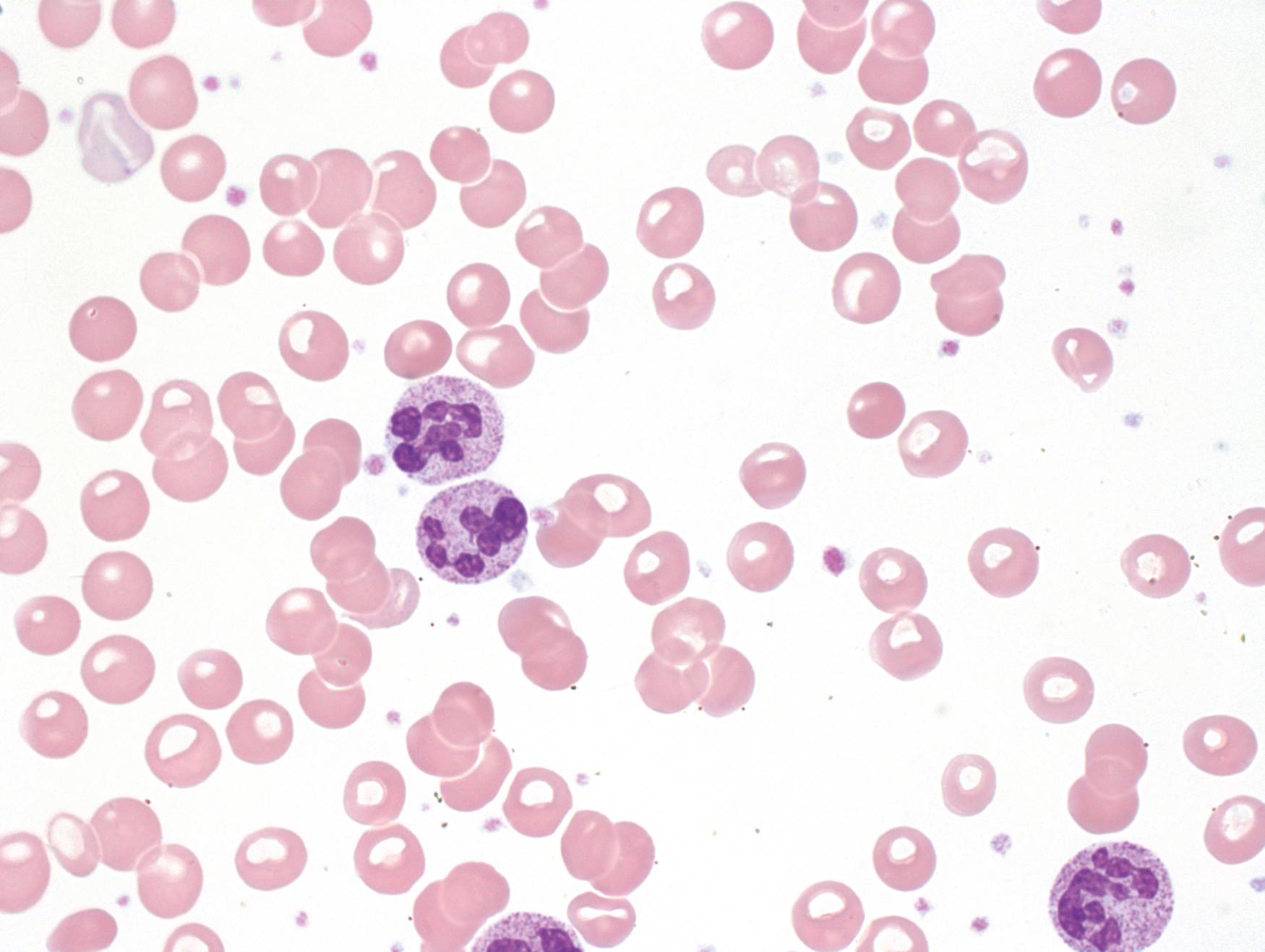
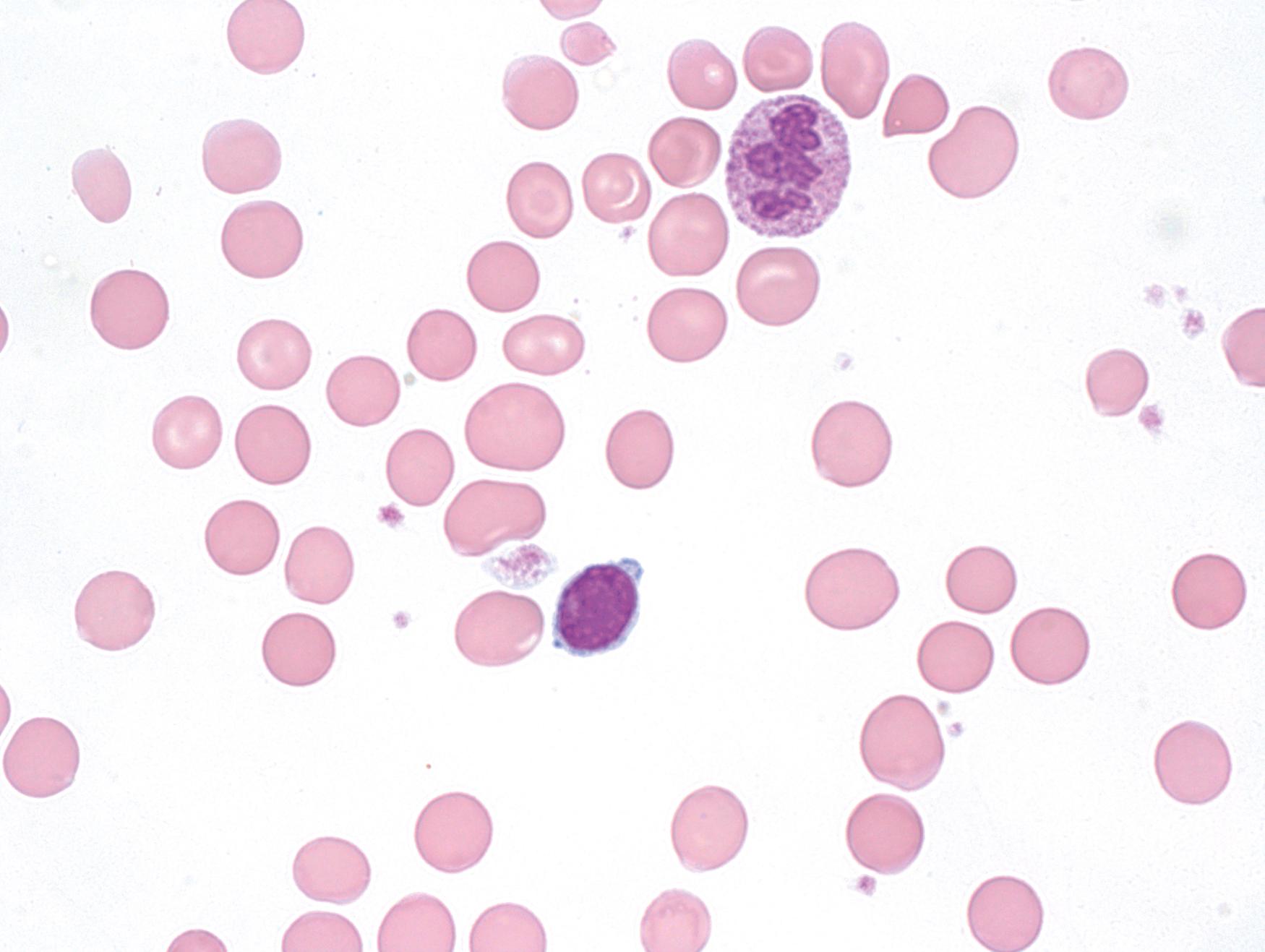
There are several causes of macrocytic anemia, including both megaloblastic and nonmegaloblastic processes. The distinction between the megaloblastic and nonmegaloblastic macrocytic anemia hinges on the presence or absence of megaloblastic changes affecting erythroid, granulocytic, and megakaryocytic lineage maturation in the bone marrow. This chapter is restricted to consideration of megaloblastic anemias, the hallmark of which is a dyssynchrony between nuclear and cytoplasmic maturation ( Fig. 4.6 ).
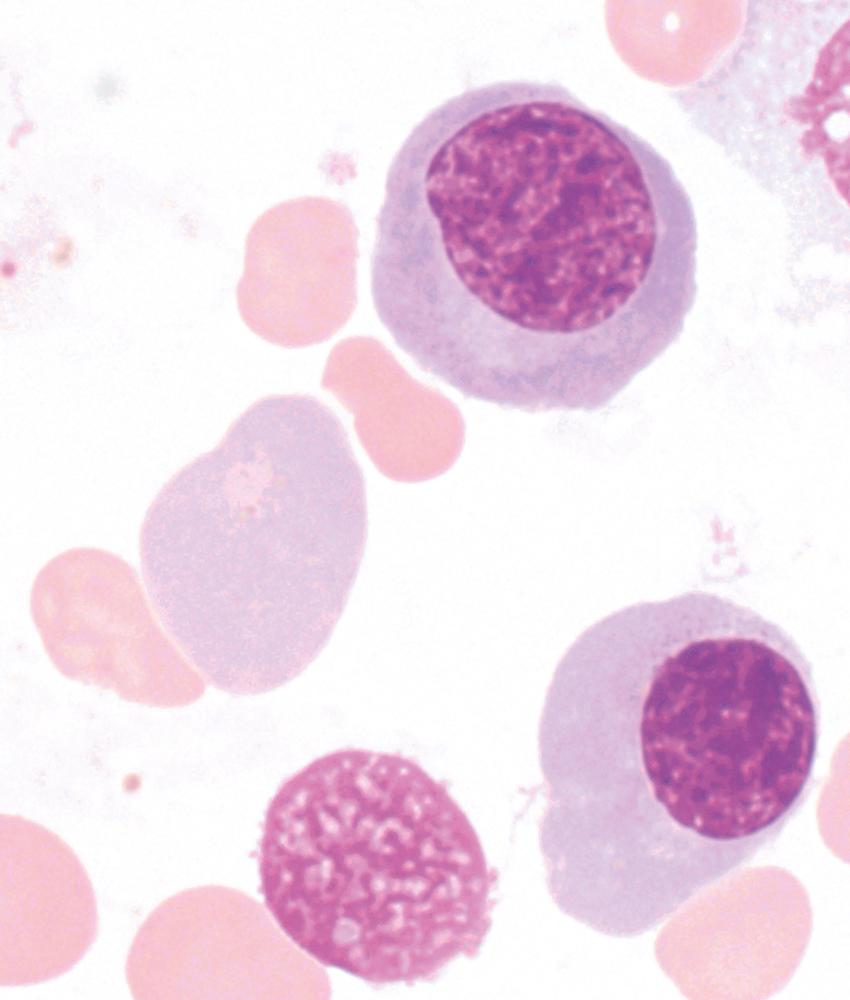
The incidence of megaloblastic anemia varies substantially depending on geographic location, nutritional practices, and the general age of the population. Historically, folate deficiency was the leading cause of megaloblastic anemia, owing to nutritional factors, and was highly prevalent among the poor and the elderly. In addition, folate deficiency is frequently associated with chronic alcohol consumption. Since the advent of national programs to fortify the diet with folic acid in numerous countries around the world to reduce the incidence of neural tube defects in pregnancy, there has been a marked reduction in folate-deficient megaloblastic anemia in those countries. However, in countries where folic acid fortification has not been instituted, the prevalence of folate deficiency remains high. A recent review reports that folate deficiency is underdiagnosed. Vitamin B 12 deficiency remains widespread and is particularly prevalent among the elderly, as well as among children and women of child-bearing age, in developing countries. , Also in developed countries vitamin B 12 has been seen as the most common vitamin deficiency in bariatric surgeries, specifically gastric bypass, aimed at weight reduction.
Become a Clinical Tree membership for Full access and enjoy Unlimited articles
If you are a member. Log in here